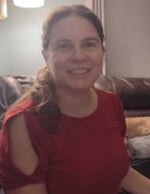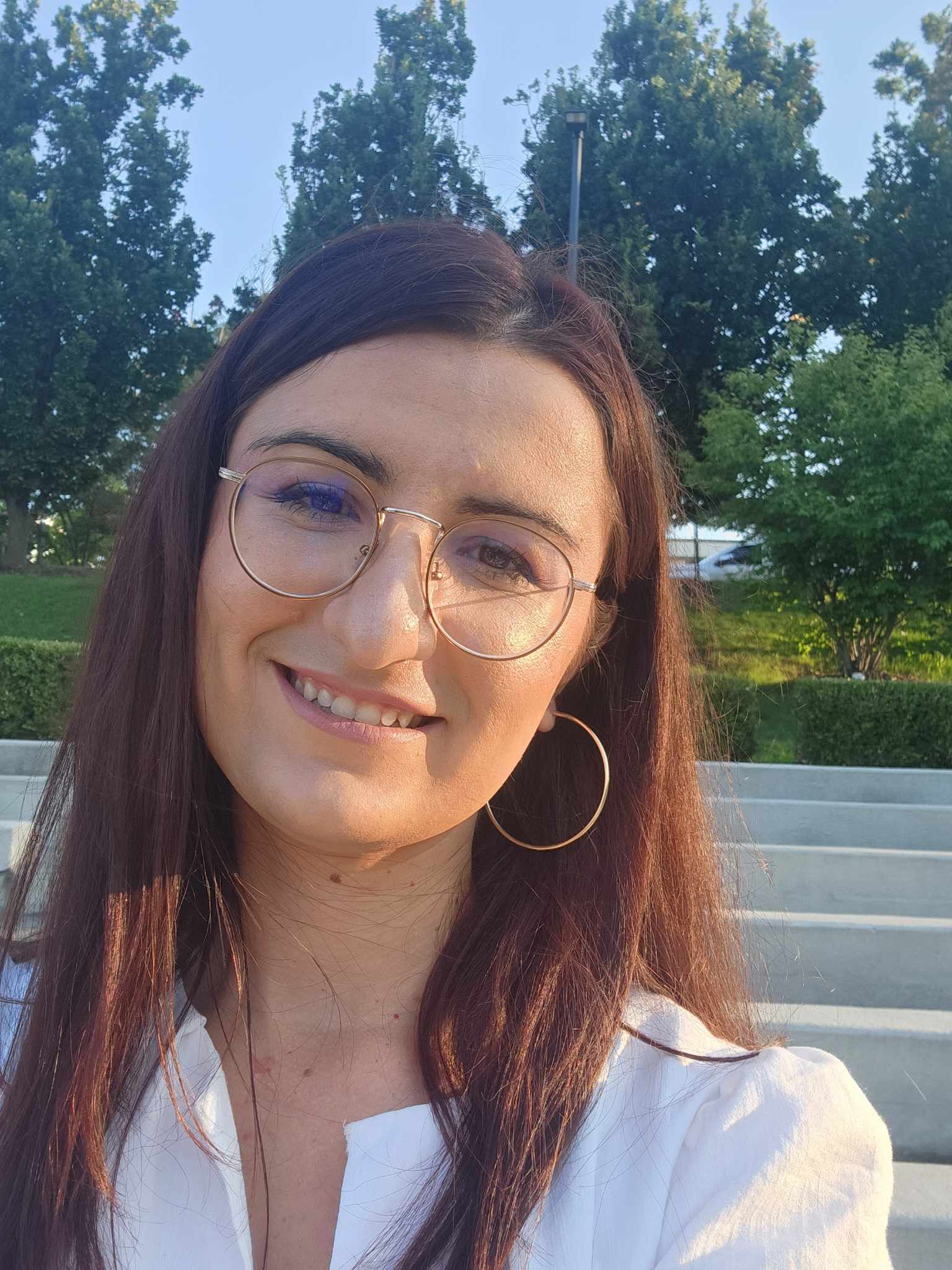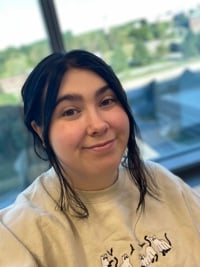 |
Natasha Buwa, Ph.D.
Postdoctoral Fellow
Natasha completed her PhD from IISER, Pune, India before joining the lab as a postdoc. In the lab, she is trying to understand the structure and function of the exocyst complex in exocytosis. Natasha thinks curiosity can only kill ignorance, which is sometimes made to look like a cat.

|
 |
Melonnie Furgason, Ph.D.
Senior Research Scientist
I graduated from Spring Arbor University in 2001 with a major in Biochemistry and minor in Math. I earned my Ph.D. In Biomedical Sciences from the UMass Medical School Graduate School of Biomedical Sciences in 2009 in the Munson lab studying the role of yeast Vps45p in membrane fusion. I spent 3.5 years as a postdoctoral fellow at Colorado State University in the Biochemistry and Molecular Biology Department. In 2013 I became a faculty member at Kettering College. In October of 2022 I returned to the Munson lab as a Senior Research Scientist. My area of interest focuses on how variants of human VPS45 affect its role in SNARE assembly.
Favorite lab equipment: FPLC (more like a love/hate relationship)
Favorite lab buffer: His Lysis Buffer
Favorite candy: Snickers
Favorite music: Disney and Soundtracks

|
 |
Kristyn Norris
Graduate Student
I graduated from Mount Holyoke College with a B.A. in Biochemistry (2016). In lab, I work on the VPS45 project, connecting genotype and phenotype on a variety of different levels. I perform characterization and functional analysis of neutrophils and other cell types that have been modified using CRISPR/Cas9. I am also studying the VPS45 protein and how the mutations are affecting it using an array of biochemical techniques to look at function and conformation.
Favorite Lab equipment: that one pipette aid that actually works
Favorite Lab buffer: pH 2 Glycine Buffer, I deal out harsh burns
Favorite candy: Skittles
Favorite music: Classic “dad” rock and punk rock

|
 |
Helen Magana
Graduate Student
I graduated with my B.S. in Biology and a minor in Chemistry from Rhode Island College in 2020. Specific mutations in VPS45 cause a rare, severe congenital neutropenia. I hope my research can inform us about VPS45 function and regulation in endocytosis and how mutations effect this process.
Favorite Lab Equipment: the rusting microwave and the step stool
Favorite Lab Buffer: KPhos buffer
Favorite Candy: Almond Joy
Favorite Music: soft pop

|
 |
Havi Fisher
Research Associate
After completing a B.S in Integrated Biology and Chemistry at The Evergreen State College (2022), Havi was accepted as an NIH-PREP scholar at UMass Chan. They currently work on understanding the function of the exocyst complex in exocytosis. In addition to their work in the lab, they are dedicated to advocating for health equity, diversity, and disability inclusion within medicine and science.

|
 |
Rinalda Proko
Postdoctoral Fellow
I completed my Ph.D. in Cell and Molecular Biology program at the University of Arkansas. Additionally, I hold a Bachelor’s degree in biology and a Master's degree in Molecular Biology from the University of Tirana in Albania. For three years, I worked as a molecular biologist at the Institute of Public Health in the Infectious Disease Control Department in Tirana, where I focused on monitoring viral diseases and conducting biosecurity risk assessments. Moreover, I am a member of the Postdoctoral and Student Committee at the American Society of Cell Biology, where I am committed to science outreach activities that enhance networking, visibility, inclusivity, and diversity in science.
In the lab, my research interests center on understanding the molecular mechanisms of exocytic vesicle docking and fusion to the plasma membrane.
Favorite Lab equipment: Microscope
Favorite Lab buffer: RIPA lysis buffer
Favorite candy: Kinder
Favorite music: Classic and jazz

|
 |
Roey Chen
Undergraduate Student
I'm currently pursuing a B.S. in Biochemistry and a minor in Bioinformatics and Computational Biology at Worcester Polytechnic Institute. I'm excited to learn more about intracellular transport mechanisms as I explore how mammalian VPS45 functions and interacts with its SNAREs.
Favorite equipment: Multichannel pipette (and thin colored sharpies!!!)
Favorite candy: Sour patch watermelon
Favorite music: Pop, R&B, and jazz
|
 |
Margret Philie
Undergraduate Student
After graduating in May 2024 from Bay Path University with their BS in Biotechnology, Margret Philie was accepted as to the UMass Chan Medical School 2024-2025 NIH-PREP program.
They are most interested in proteomics, PPIs, and science communication, and their previous research experience was in neurobiology, zebrafish, and protein work. Margret is hoping to pursue a PhD in structural immunology or Science Communication with a focus in outreach and education for the general public.
|
 |
Karly Stallworth
Research Associate II
Karly Stallworth graduated from Assumption University in Worcester, MA in May 2021 where she majored in neuroscience with a cellular path and minored in political science. Her previous research at UMass was in a neurology lab focusing on Amyotrophic Lateral Sclerosis (ALS) where she used techniques such as cell culture, histology, immunofluorescence, microscopy, and behavioral analysis on mouse models.
She maintains a nursing assistant license and worked throughout high school and college prior to pivoting to research. She took care of some residents that experienced cognitive and neurological issues leading to an interest in the overlap of medicine, science, and research. Karly aspires to attend medical school and pursue a career as a physician-scientist. Her area of interest in the Munson lab is expanding on our understanding of a VPS45 mutant mouse model and exploring the potential role of VPS45 mutation on neurological dysfunction.
Favorite Lab equipment: Fluorescent Microscope
Favorite Lab buffer: Sodium Citrate Buffer
Favorite candy: Zours (discontinued in 2020)
Favorite music: Anything upbeat and happy!
|
 |
Rob Nathans
Senior Research Scientist
Robin Nathans (Rob) holds a Bachelor's degree in Microbiology from the University of Massachusetts, Amherst, and a Master's degree in Biotechnology from the University of Connecticut, Storrs. He is technically a re-hire, having worked as a research scientist in Dr. Tariq Rana's lab from 2002-2008 in this same department, working alongside Dr. Akbar Ali. While here he discovered and co-developed RN-18, a small molecule HIV-1 Vif inhibitor that effectively inhibited HIV-1 replication in non-permissive cells. Pre-clinical development of RN-18 continued for many years afterward in Dr Rana's lab as well as in Dr. Mario Stevenson's lab. After UMass, Rob worked 15+ years in the pharmaceutical industry, Novartis, then Pfizer. At the latter, he helped develop PF-07868489, a first-in-class biologic for PAH.
Rob is excited to be returning "home", working as a senior research scientist in Dr. Maryann Munson's lab where he will be exploring membrane trafficking's role in neurological disorders and of course helping students. He has a real desire to help young scientists explore and determine their own unique career path, whether it be continued academics, industry, or something else entirely !
Favorite Lab equipment: the machine that goes PING !
Favorite Lab buffer: the one that works.
Favorite candy: anything made in the UK.
Favorite music: Celtic, Punk, and Celtic-Punk.
|